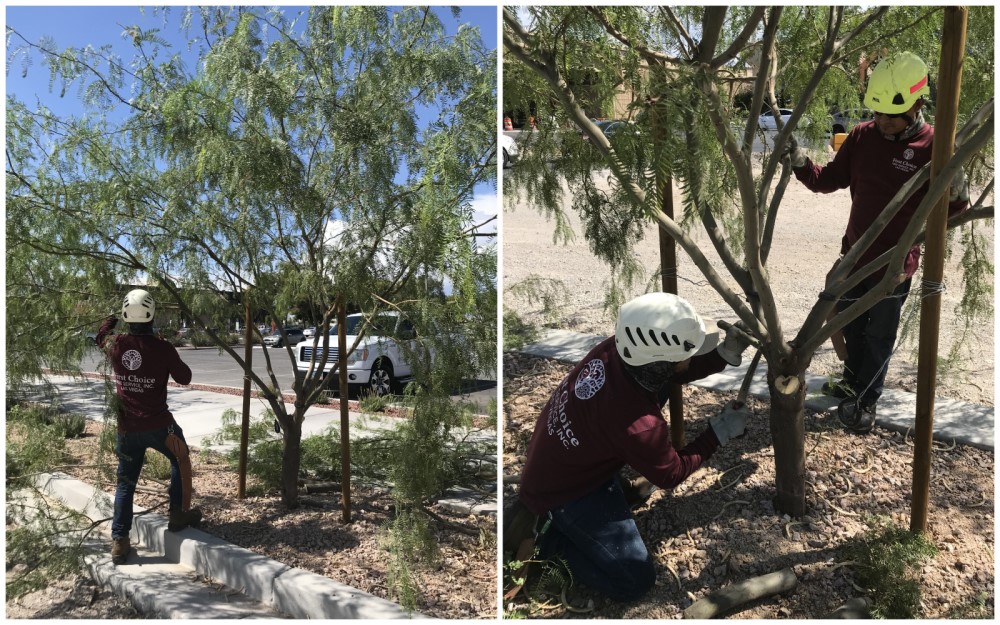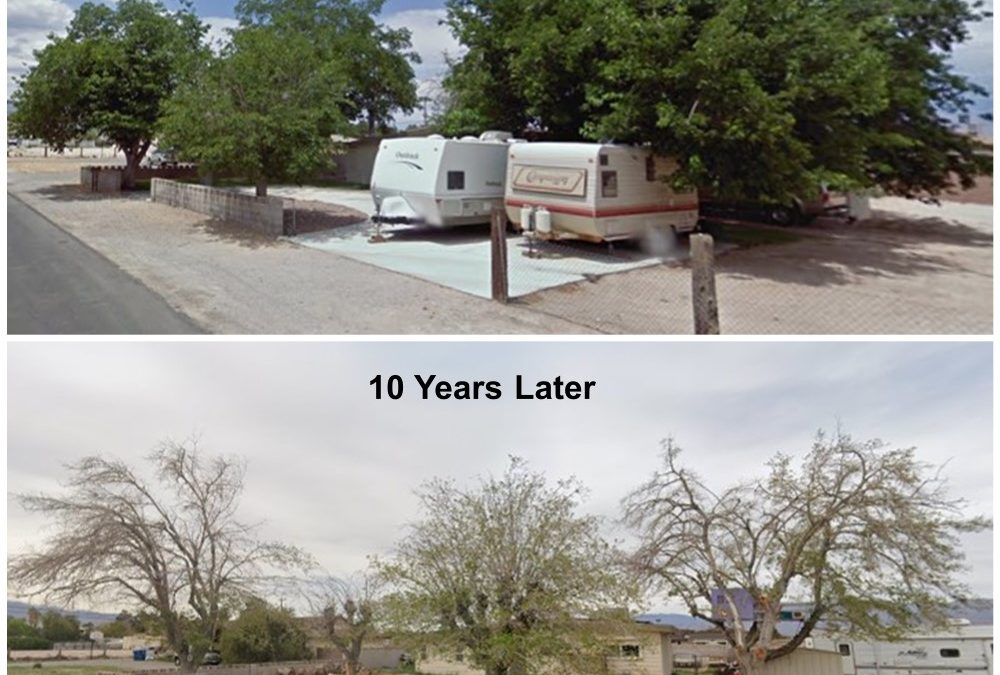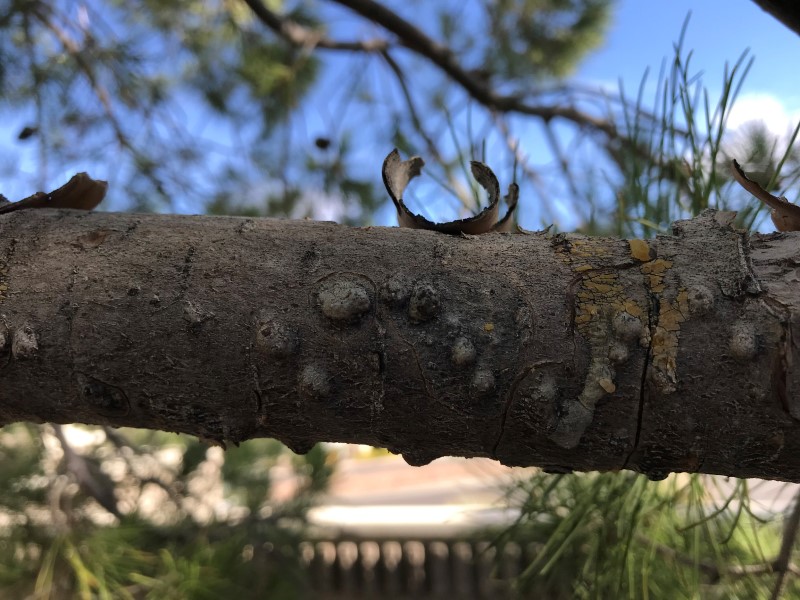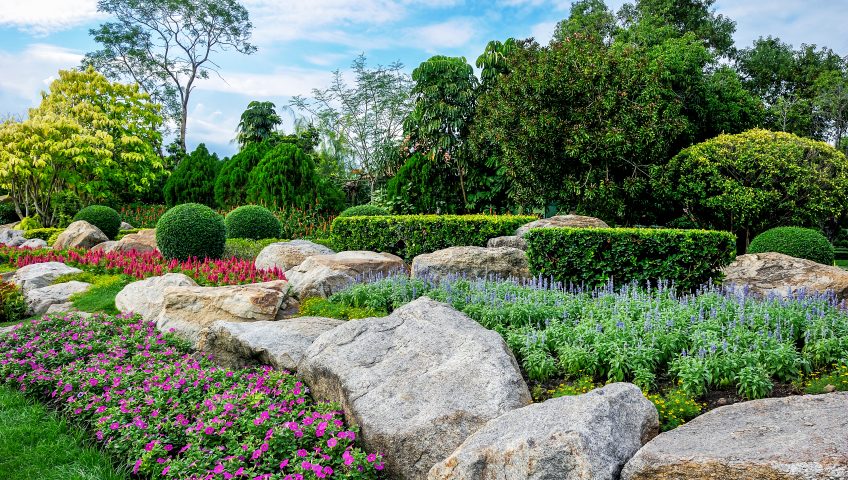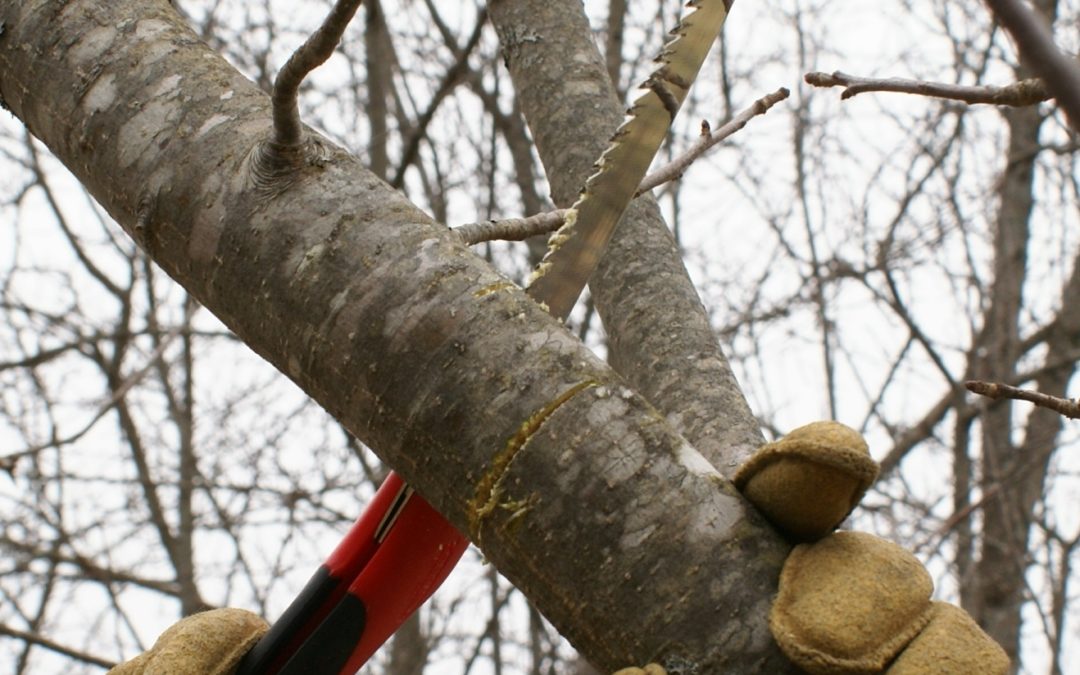
PRUNING YOUNG TREES
Proper pruning during the life span of a tree is important to sustain good health. However, pruning trees when they are younger reduces the amount of large limb removal as they mature. Pruning large branches on mature trees leave large wounds, increasing the tree’s vulnerability to disease and infestation. The larger the wound, the larger the surface for the introduction of disease to the tree. The smaller the wound, the faster the wound will seal and ward off infection.
A Certified Arborist will ask several questions before pruning younger trees. What is the objective? What is the reason the tree was planted in a particular spot in the first place? Was it for providing shade, noise reduction, and/or wind block? Or was it planted for fruit production, increase property value, prevent soil erosion, or improve mental or physical health in recovery? Or is the reason environmental? These questions should be addressed with property owners prior to the pruning process and communicated to the person doing the actual pruning.
Here are three major reasons trees are typically pruned:
- HEALTH: Sanitation. Removal of dead, diseased and damaged limbs. Thinning- improve penetration of light and air.
- APPEARANCE: Shape for aesthetic purposes, natural form and growth habit.
- SAFETY OF PROPERTY AND PEOPLE: Storm damaged limbs, hangers or widowmakers, raising over walkways, parking, clearing lighting and cameras.
Once the reason the tree was planted is established, the arborist can approach the pruning process of a younger tree with this in mind. Pruning may proceed with first removing dead or damaged limbs, and/or cross or competing limbs. The amount of pruning and/or if to prune will be determined by the density and health of the canopy. The arborist may recommend waiting another season or two for the canopy and root system to further establish. He/she will also take care not to over prune to prevent sun scorch or deprive the tree of much needed sugars through photosynthesis.
Your arborist can advise you on the best time to start and how much pruning your young trees need to thrive and become beautiful, healthy mature trees. First Choice has five experienced Certified Arborists on staff ready to answer all of your pruning questions.
Written by Mike Cooper & Veronica Leary
Photo by UMAINE Extension

